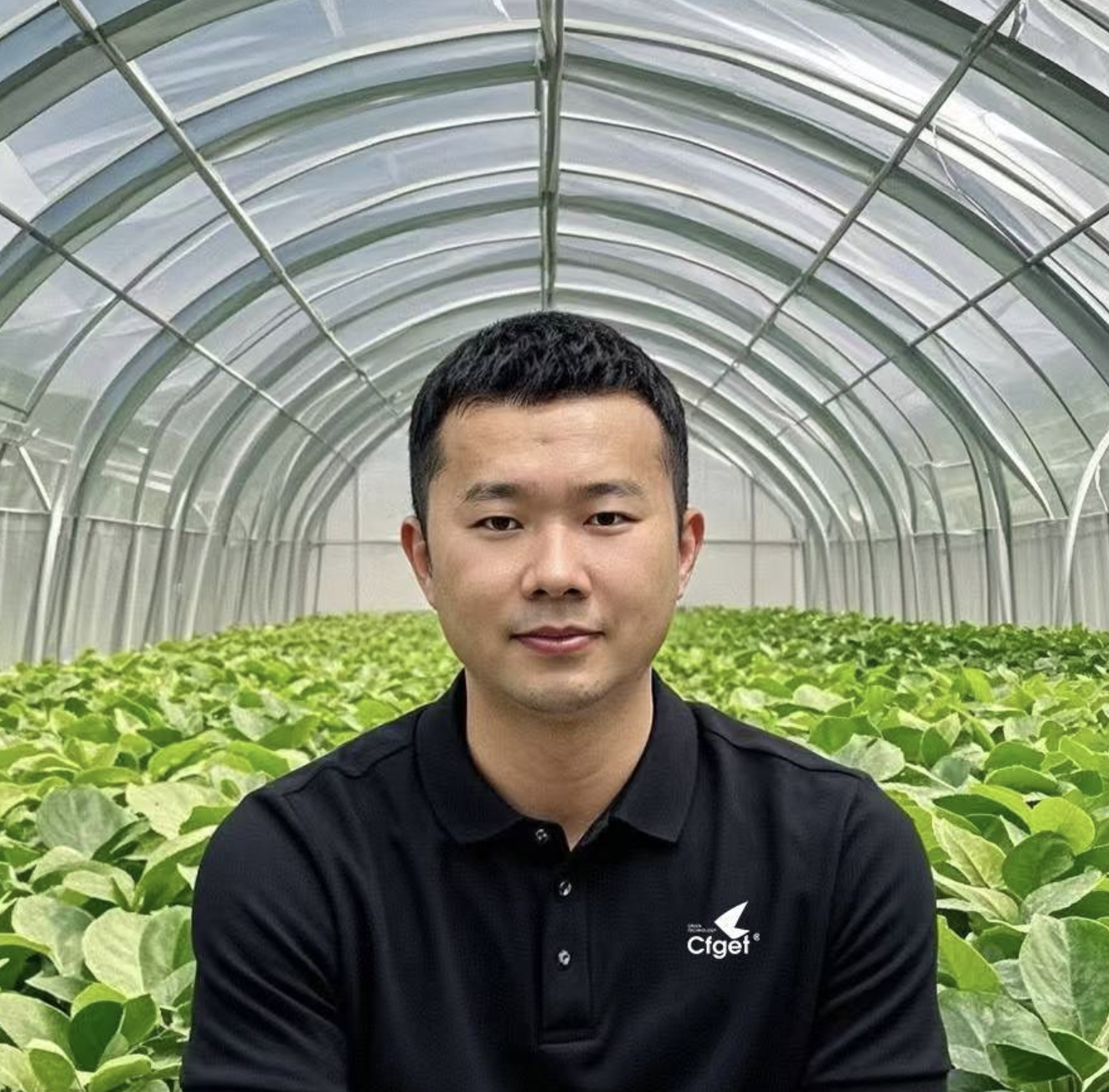Aphids are one of the most common and damaging pests in greenhouses. Have you ever noticed tiny insects clustering on young leaves, sucking out the plant’s sap? These small pests not only threaten plant health but also spread plant viruses, seriously impacting crop yields and quality. According to studies, aphid outbreaks can cause a 50%-80% reduction in crop yield, leading to significant economic losses for growers. Controlling aphids is crucial for maintaining healthy greenhouse crops.Follow CFGET to know how to prevent aphid infestations, and what actions to take if they appear.

How Aphids Threaten Greenhouse Crops
* Sucking Plant Sap
Aphids use their mouthparts to pierce the young leaves and stems of plants, sucking out the sap. They prefer tender new growth, which can severely affect plant development. Without enough nutrients, plants show curled, stunted, or wilted leaves. Serious aphid infestations can reduce crop yields drastically, and in some cases, entire plants can die.
* Spreading Plant Viruses
Aphids are powerful carriers of plant viruses, capable of spreading over 150 different viruses, including cucumber mosaic virus (CMV) and melon necrotic spot virus. Crops infected by these viruses often show deformities and stunted growth, significantly reducing their market value. Once a virus is spread, it can easily infect other plants in the greenhouse, making control even harder.
* Secreting Honeydew and Encouraging Mold
Aphids secrete a sugary substance called honeydew, which can encourage the growth of mold, particularly sooty mold. This mold covers plant leaves, blocking sunlight and hindering photosynthesis, further weakening the plants. While mold may not kill plants directly, it reduces the plant's efficiency and overall crop quality, making the produce less marketable.
How to Prevent Aphid Infestations
Prevention is the best way to manage aphids. By controlling the greenhouse environment, using proper soil management, and regular monitoring, growers can effectively reduce the risk of aphid infestations.
* Maintaining the Right Environmental Conditions
Greenhouses provide ideal conditions for aphids, especially in warm, humid environments. Aphids thrive in temperatures between 15°C and 30°C. By carefully controlling the temperature and humidity, growers can slow down aphid reproduction. It is recommended to keep greenhouse temperatures between 18°C and 25°C during the day, and maintain humidity levels between 50% and 70%.
* Fertilizing and Watering Management
Excessive use of nitrogen fertilizers promotes rapid growth of tender new leaves, which aphids prefer. Growers should balance fertilizer use, avoiding too much nitrogen. Adding phosphorus and potassium can strengthen plants, making them less attractive to aphids. Proper watering is also important. Overly wet conditions can promote aphid growth, so maintaining the right watering schedule can reduce the risk.

* Regular Monitoring and Early Detection
Early detection is key to controlling aphids before they spread. Growers should regularly inspect young leaves, the undersides of leaves, and stems where aphids tend to gather. Using tools like yellow sticky traps can help catch early-stage aphid activity, allowing for timely interventions.
What to Do If Aphids Are Found
Once aphids are detected, quick action is necessary. Here are some effective methods to manage an aphid infestation.
* Biological Control
Biological control is a green method that reduces the need for chemical pesticides. Releasing natural enemies of aphids, such as ladybugs and hoverflies, can help control aphid populations. In one study, after releasing ladybugs in a greenhouse, aphid numbers dropped by 60% within two weeks. Parasitic wasps are another effective tool. They lay eggs inside aphids, and their larvae kill the aphids, reducing their reproduction.
* Chemical Control
Botanical Insecticides: Botanical insecticides like neem oil are natural extracts that disrupt aphid growth and reproduction, reducing their population. Neem oil is low in toxicity and environmentally friendly, making it a top choice for greenhouse use. Studies have shown that neem oil can reduce aphid populations by 60%-70%. Another benefit is that neem oil does not harm beneficial insects, preserving the ecological balance.
Chemical Insecticides: If aphid populations grow rapidly or infestations become severe, low-toxicity chemical insecticides can help quickly control the spread. Imidacloprid and avermectin are two common insecticides. They work by disrupting the aphids’ nervous systems, paralyzing them, and eventually killing them. Careful attention to dosage and frequency of application is crucial to prevent resistance from developing. Additionally, it’s important to follow safety intervals to ensure that pesticide residues do not affect crop quality or consumer health.
* Isolation and Removal
If individual plants are heavily infested, it’s best to isolate and remove them to prevent aphids from spreading. This is especially important when aphids are spreading viruses. Quick isolation can help stop the spread of diseases. For severely infested plants, it’s recommended to completely remove and destroy them to avoid further infection of healthy plants.

Aphids pose a serious challenge to greenhouse crops, but by using the right preventive measures and timely control methods, their damage can be minimized. Greenhouse growers should combine environmental management, biological control, physical control, and chemical methods to effectively manage aphids. The key is early prevention, regular monitoring, and taking comprehensive actions at the first sign of aphids to prevent their spread and outbreaks. By adopting a scientific approach to pest control, growers can protect their crops’ health, ensure high yields, and achieve sustainable production.
Email: info@cfgreenhouse.com
Phone: (0086) 13550100793
Post time: Sep-21-2024






 Click to Chat
Click to Chat